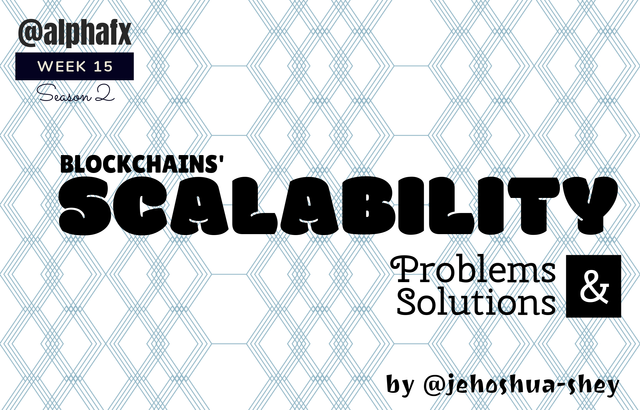
INTRODUCTION

Ever since the pseudonymous Satoshi Nakamoto presented the bitcoin idea via the infamous bitcoin whitepaper, the world has gone on to witness what can be ranked amongst the most remarkable innovations of the 21st century - the blockchain technology.
Having overcome obscurity in its first few years of existence, this grand innovation seems to come short of a major stride which should have been a stepping stone from prominence to dominance. This stride is none other than the much sought after 'Scalability' - the king maker in transaction processing.
This post elaborates on some blockchains' struggles with scalability and potential solutions to its erstwhile incapacitation. These blockchains are:
Bitcoin
Tron and
Binance Smart Chain
WHAT IS SCALABILITY

Outside the crypto glossary, scalability is generally the ability of something to increase or decrease in size while still having its intrinsic properties unchanged, or simply the ability to scale.
From the word 'scalability' we can clearly decipher two words - 'scale' and 'ability', hence the meaning, the ability to scale.
This term has its place among other abilities like flexibility, malleability, expandability, etc, all being the nature of being able to alter size and/or form/shape while maintaining essential properties.
SCALABILITY IN BLOCKCHAIN TECHNOLOGY

In blockchain technology, scalability refers to the ability of a blockchain to increase its output as the amount of input increases. By this, we're definitely referring to transaction processing, the live load on blockchain technology.
At its inception, a blockchain might have about 2,000 users, with an average of 7 transactions per second (TPS). If the throughput of that blockchain is 7 TPS, that'll serve just fine as transactions will go on in a matter of seconds.
However, when the blockchain accrues more users and transactions sent to the chain increases significantly to say 100 transactions per second, a throughput of 7 TPS will no longer suffice.
This is because, only 7 out of the 100 transactions in a second will be confirmed, leaving 93 transactions unconfirmed. Thankfully, the next second comes with another set of 100 transactions.
Evidently, scalability on a blockchain is a necessity. Unfortunately, this is not obtainable some blockchains as we'll see shortly.
SCALABILITY ON BITCOIN BLOCKCHAIN

The first and the best (by market cap), bitcoin is the pioneer of cryptocurrency and blockchain technology in general. The bitcoin blockchain was created with the following characteristics:
POW
Proof of Work is the consensus mechanism of the bitcoin blockchain. In this consensus, certain nodes on the network called miner nodes, have to solve complex but useless mathematical problems to validate transactions. This activity consumes so large an amount of power that's off the grid of renewable energy.
The complexity of the mathematical problems is not the only challenge in bitcoin's POW. Perhaps the fact that only the miner who solves the problem first gets rewarded is even greater and both ensure that not everyone can mine bitcoin.
CASCADE STYLE SYNCHRONIZATION
Another characteristic of bitcoin's blockchain is the manner in which the series of activities involved in confirming blocks proceed. The procession of mining activities follow a cascade pattern (in the words of Zhijie Ren). This is elaborated below
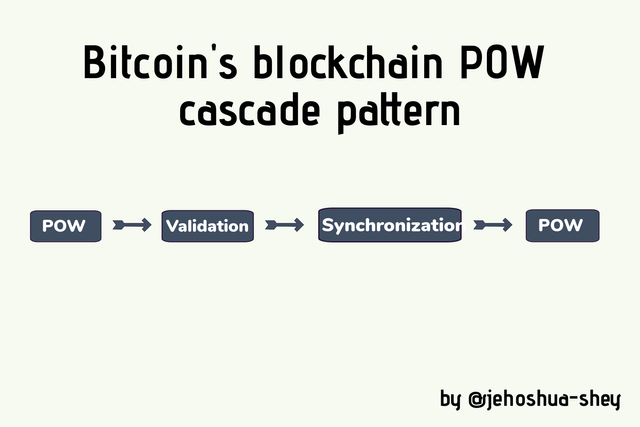
In this cascade pattern, POW goes on until a miner successfully completes the complex computations and validates a block. Next, this new block has to be validated by miners to be genuine. After that, it must be synchronized with all the nodes on the network, only then can the race for a new block begin.
This synchronization usually requires a lot of bandwidth and the fact that it is done after validation and before the creation of a new block indicates time wastage. Bitcoin-NG employs a parallel method, running synchronization, validation and consensus at the same time.
BLOCK TIME
On bitcoin's blockchain, the block time is 10 minutes. This implies that it takes 10 minutes to confirm a block. After every block is confirmed, a certain amount of bitcoin is released to the miner who confirms the block. Currently, the figure stands at
6.25 BTC per block,
Considering that a block is completed every 10 mins, the rate of bitcoin creation is
6.25 BTC / 10 mins.
This figure has to be maintained as an intrinsic feature of the bitcoin blockchain.
BLOCK SIZE
Each bitcoin block was created to hold ~1MB of transactions. This is about 1,048,576 bytes, according to maths.
SegWit Bitcoin increased this figure to up to 4MB by separating signatures from transaction data, allowing each block to contain more and only transaction data.
TRANSACTION SIZE
On bitcoin, the average size of transactions is 578.23 bytes, according to tradeblock.com.
This information is correct as at the time of making this entry. Check the image below for proofs
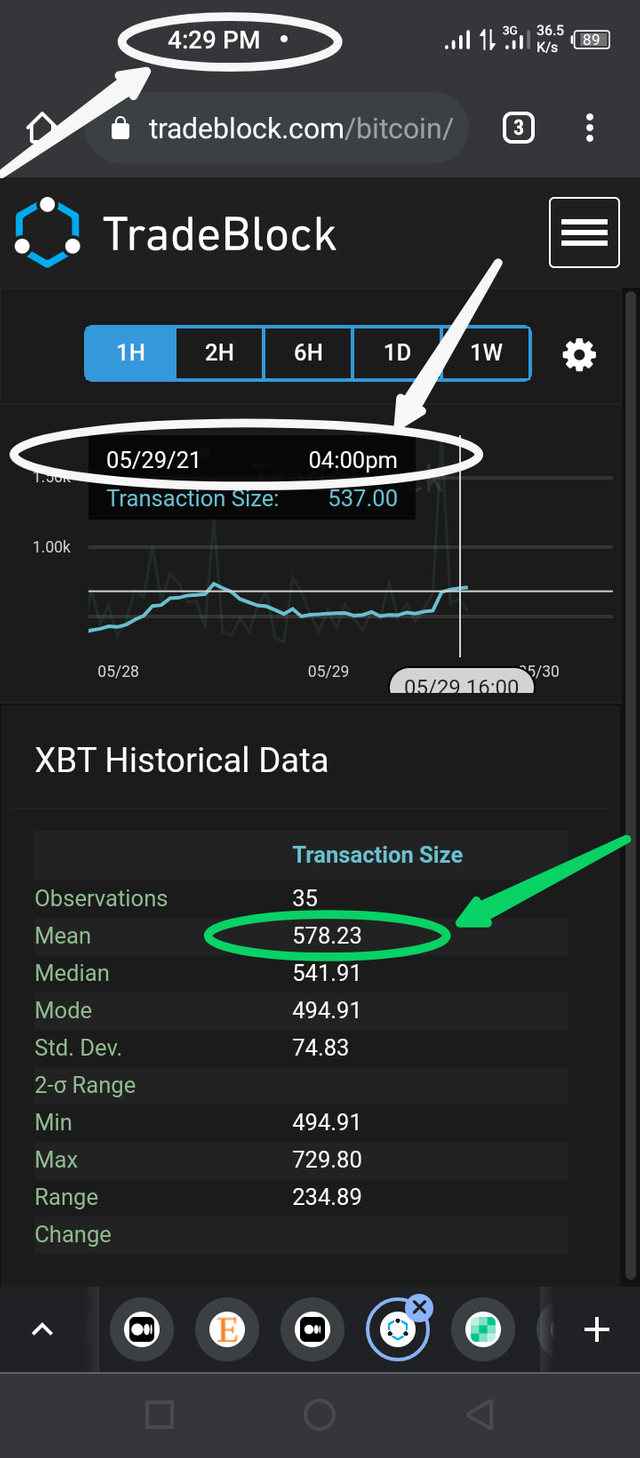
A screenshot of tradeblock.com on my mobile device
The white circles and arrows show proof of time and date, while
The green circle and arrow shows proof of average (mean) transaction size.
TRANSACTION SPEED
Now let's do the maths.
As at 4pm (WAT) today (May 29, 2021),
Average transaction size (ATS) = 578.23 bytes
Bitcoin (Legacy) block size (BS) = 1,048,576 bytes
Bitcoin's block time (BT) = 10 mins = 600s
Transactions/block = BS/ATS = 1,048,576/578.23 = 1,813.424 transactions.
Since
1 block = 10 mins = 600s
1,813.424 transactions were confirmed in 10 mi s or 600s
Therefore, transactions per second (TPS)
= 1,813.424/600
= 3.02 TPS
The above figure was the average transaction speed on bitcoin at 4pm on May 29, 2021.
Hence we have bitcoin's transaction processing efficiency as 3.02 TPS.
Now let's consider the Tron blockchain
SCALABILITY ON TRON BLOCKCHAIN

Tron is an analogous of Ethereum in that it is a DeFi driven blockchain. By integrating smart contracts as well as allowing tokens to be built on its chain and traded in DEXes, Tron has been able to grow its ecosystem into what is now a barrage of DeFi apps, tokens and DEXes.
It offers a cheaper alternative to Ethereum and indeed, a faster one. Here's a rundown of the Tron blockchain.
DPOS
DPOS is the consensus mechanism of the Trom blockchain. It provides an avenue for decision making being made by some selected people. This decision making power is vested on people democratically selected through voting and election processes.
With the DPOS, Tron, a decentralized blockchain platform, can have critical changes appended to its network as a result of the decisions of a few individuals. These individuals are however elected by tron users through voting. This is why Tron is regarded as having a low level decentralization.
BLOCK TIME
On the Tron blockchain, it takes about 3 seconds for a block to be completed. This is evident from the screenshot from tronscan below
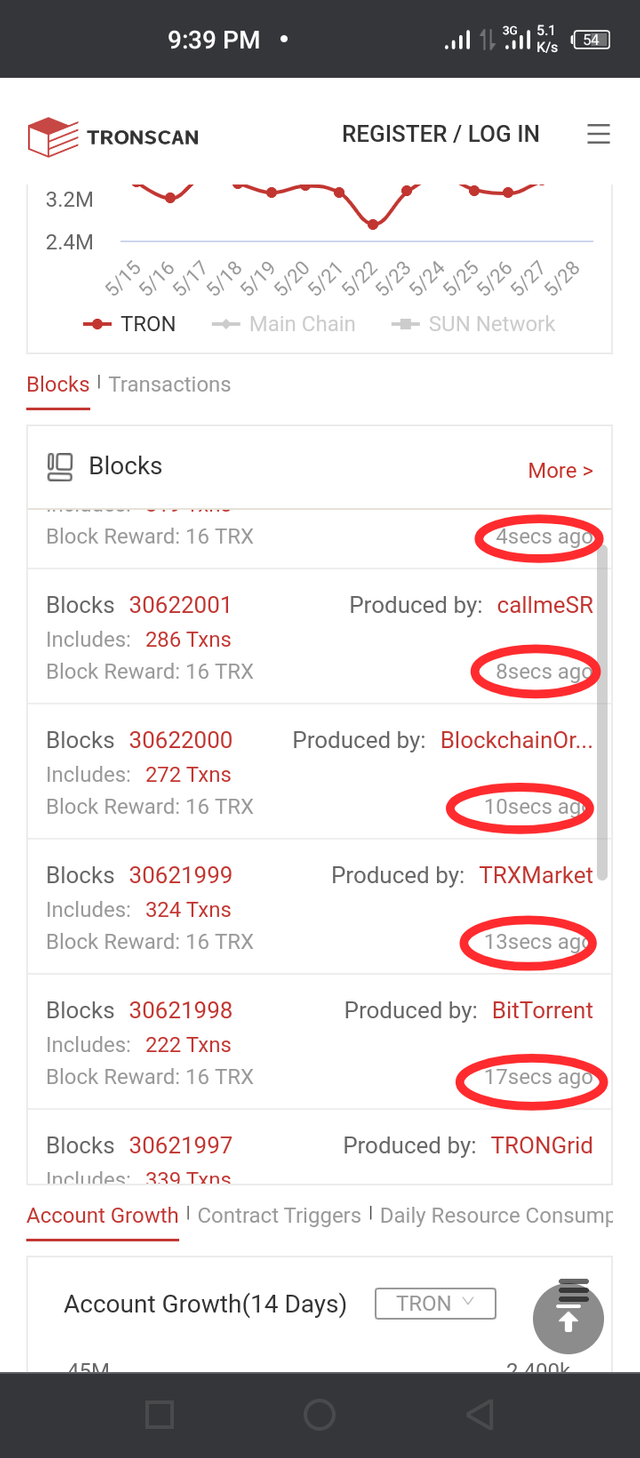
BLOCK SIZE
Let's consider the screenshot from tronscan below.
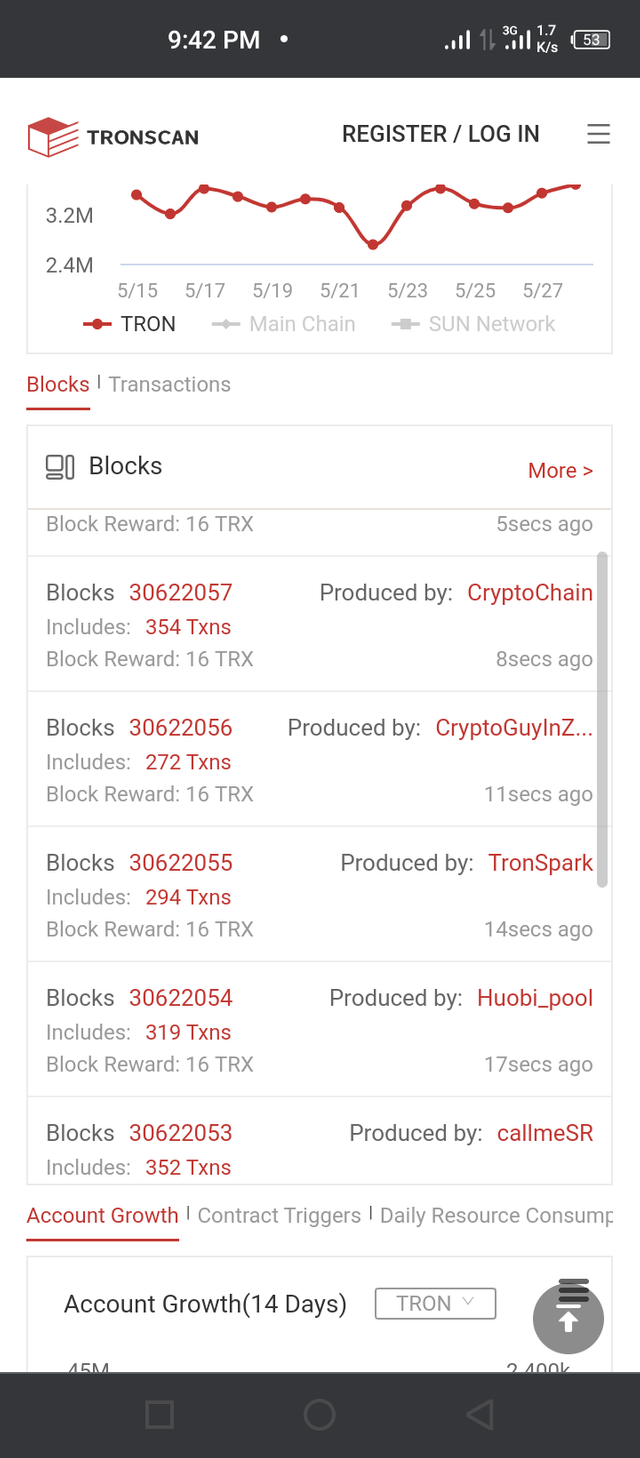
We can see that the size of a block is not fixed. It ranges from 272 - 354 transactions per block. For some blocks, the figure is higher.
TRANSACTION TIME
Still on tronscan, we can find the current transaction speed as well as the maximum transaction speed.
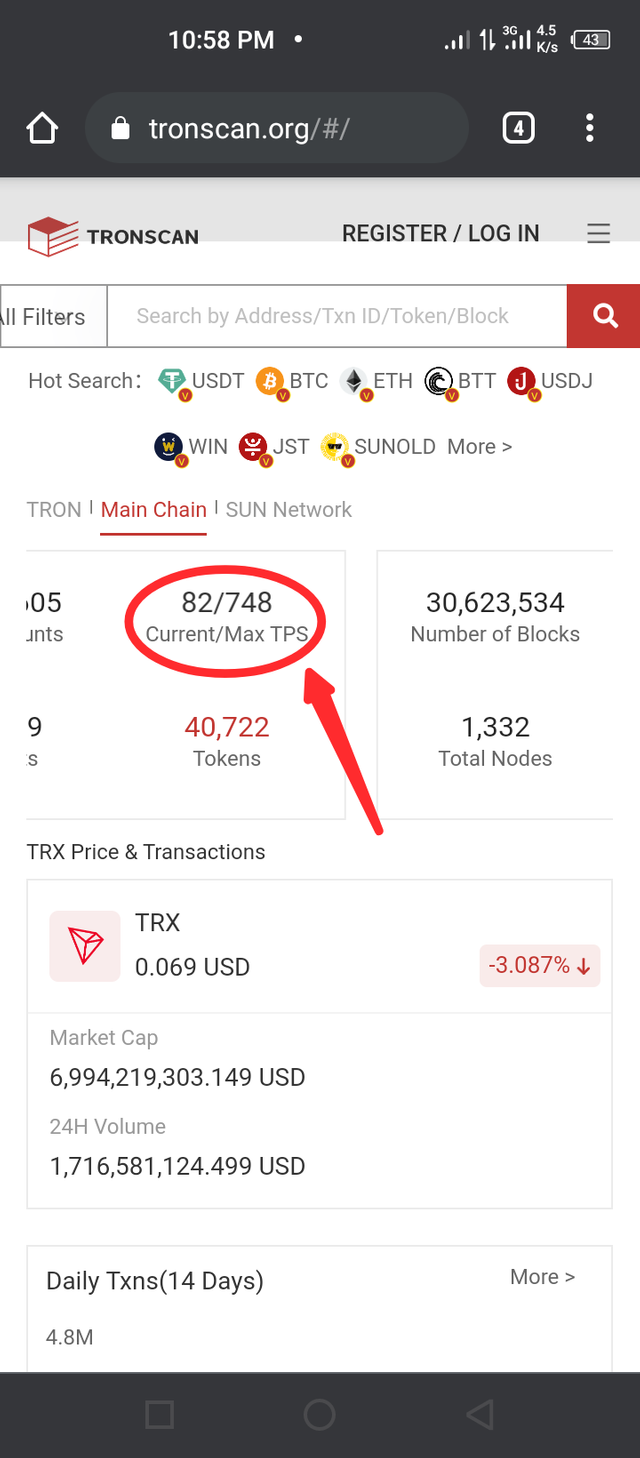
In the image above, the current transaction speed (as at the time the picture was taken) is 82 TPS, while the maximum transaction speed is 748 TPS.
Let me share details of a transaction I made to show a practical example of Tron's transaction speed.
I tried sending 3.7 TRX from my TronLink wallet to @huobi-pro account.
I copied my address and went over to TronLink
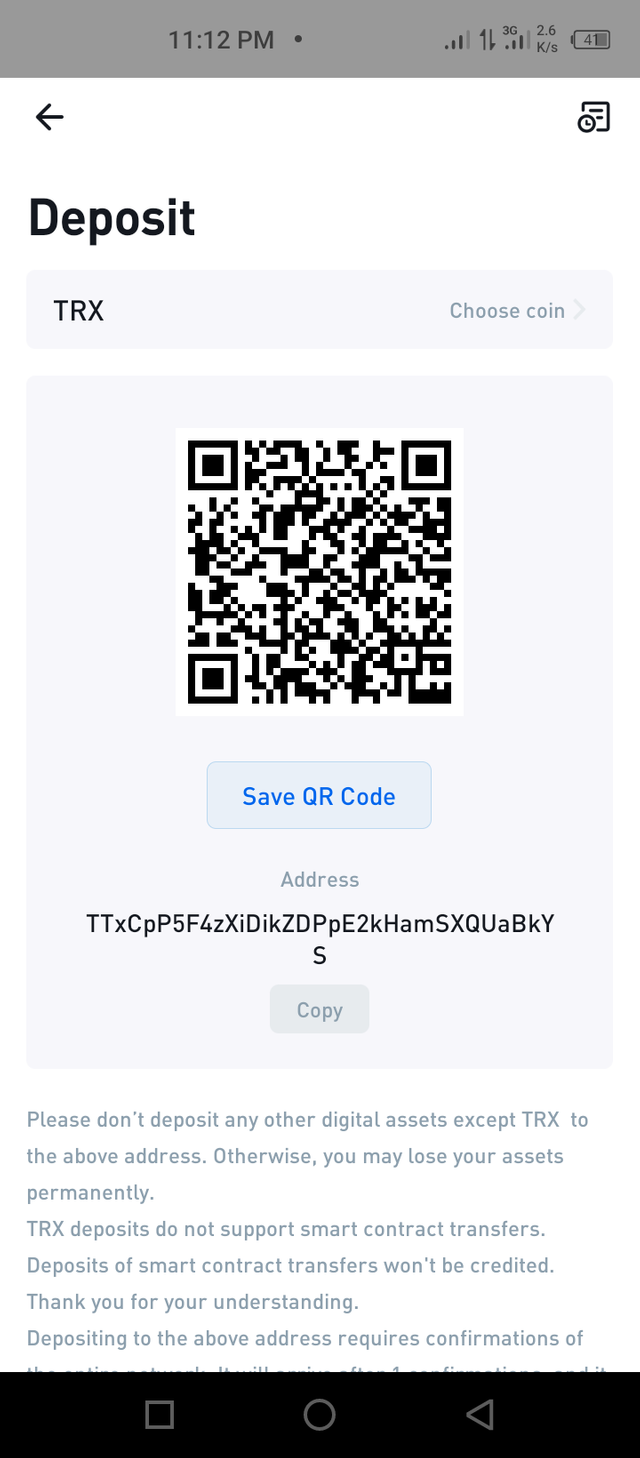
In TronLink, I clicked on TRX
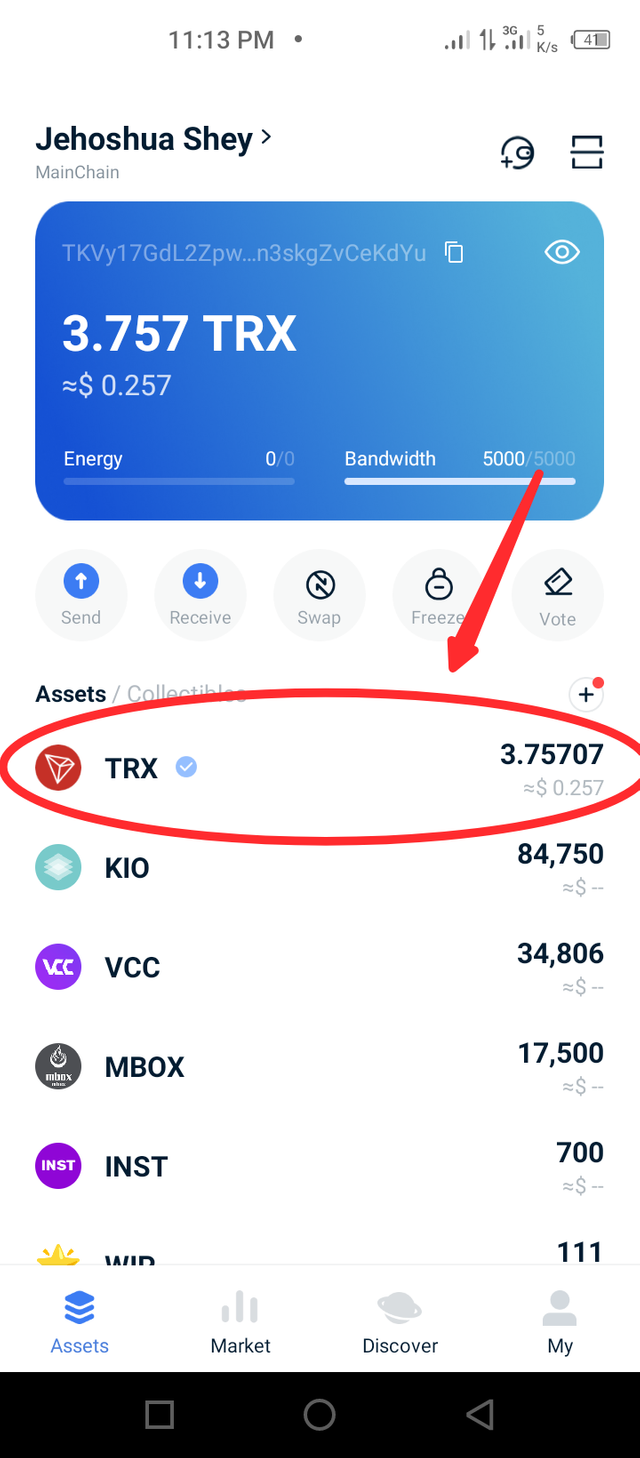
Then I clicked on 'send' at the bottom left
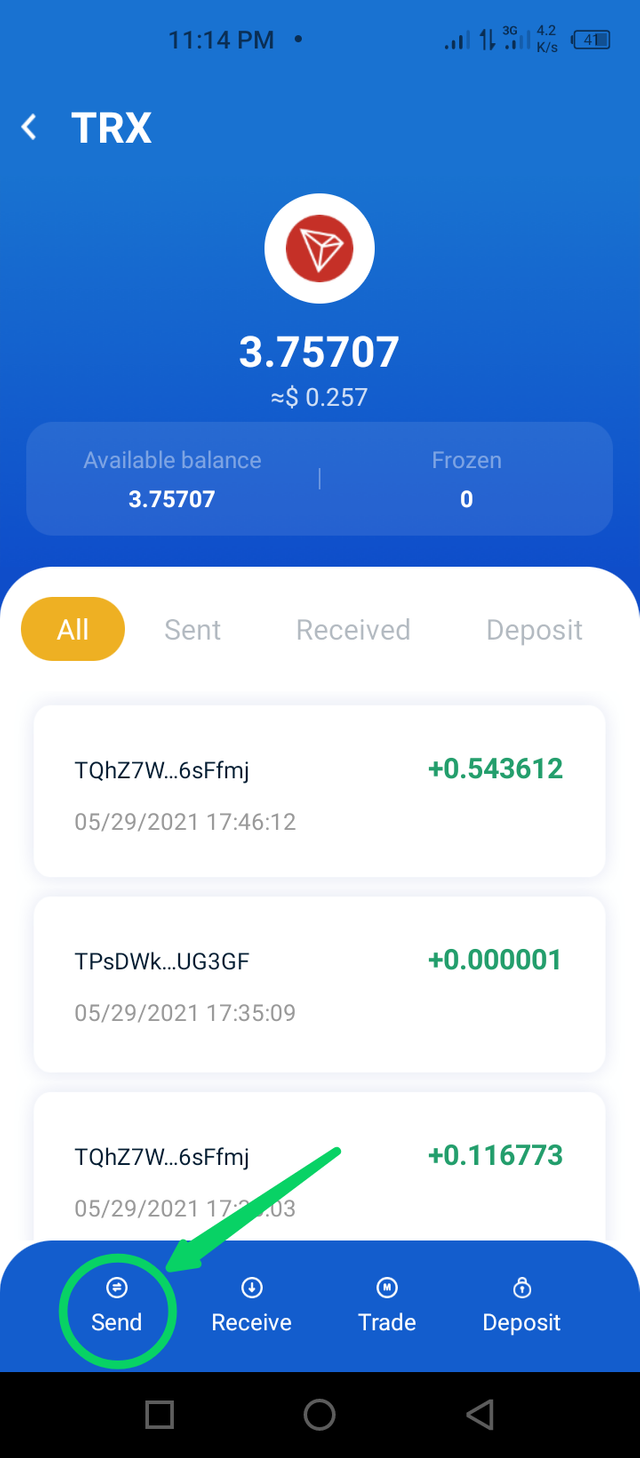
I entered the details of the transaction and clicked on send
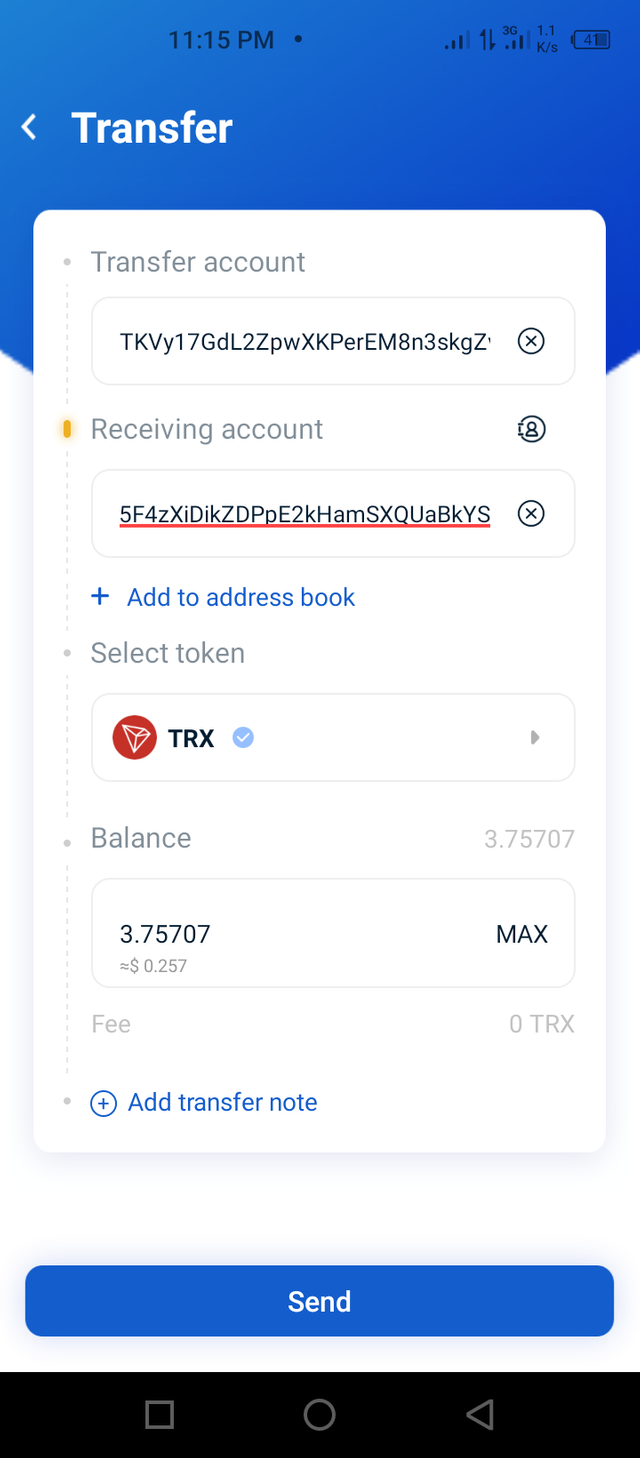
I had to confirm the transaction
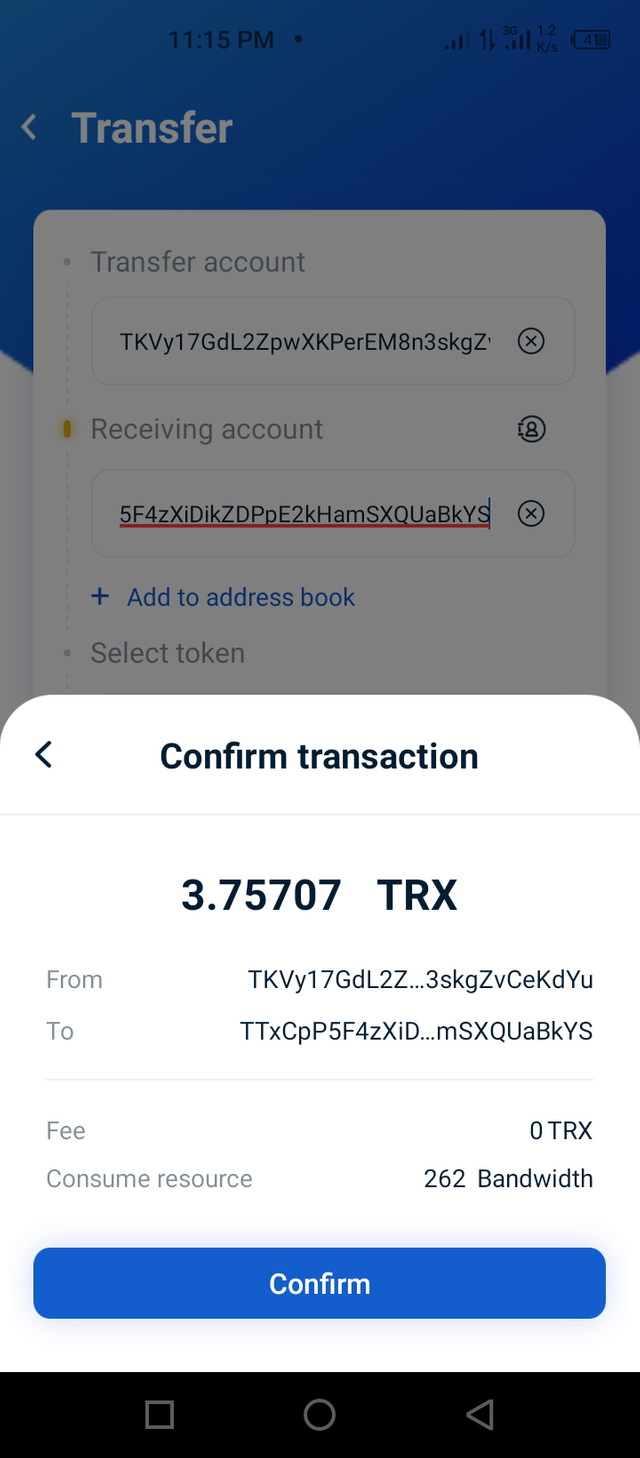
And also enter my password

Then the transaction was sent
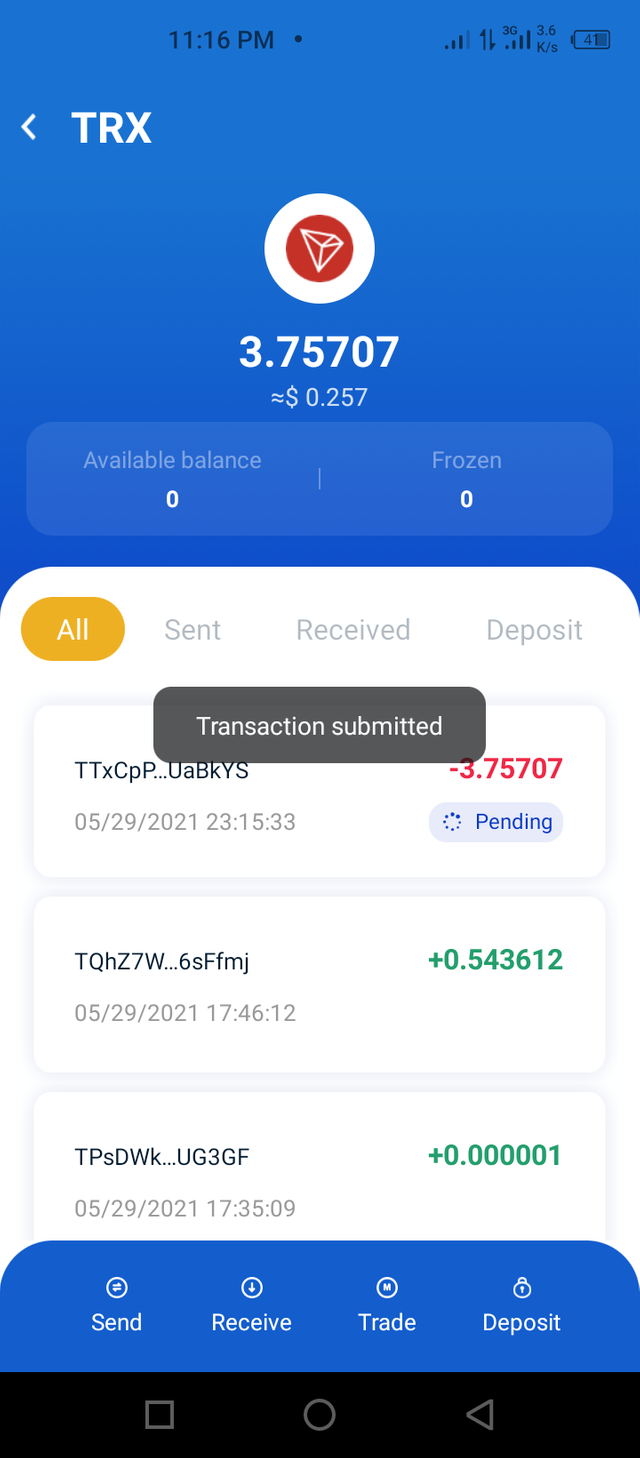
Next, I checked to see the details of my transaction by clicking in the transaction in my TronLink wallet.
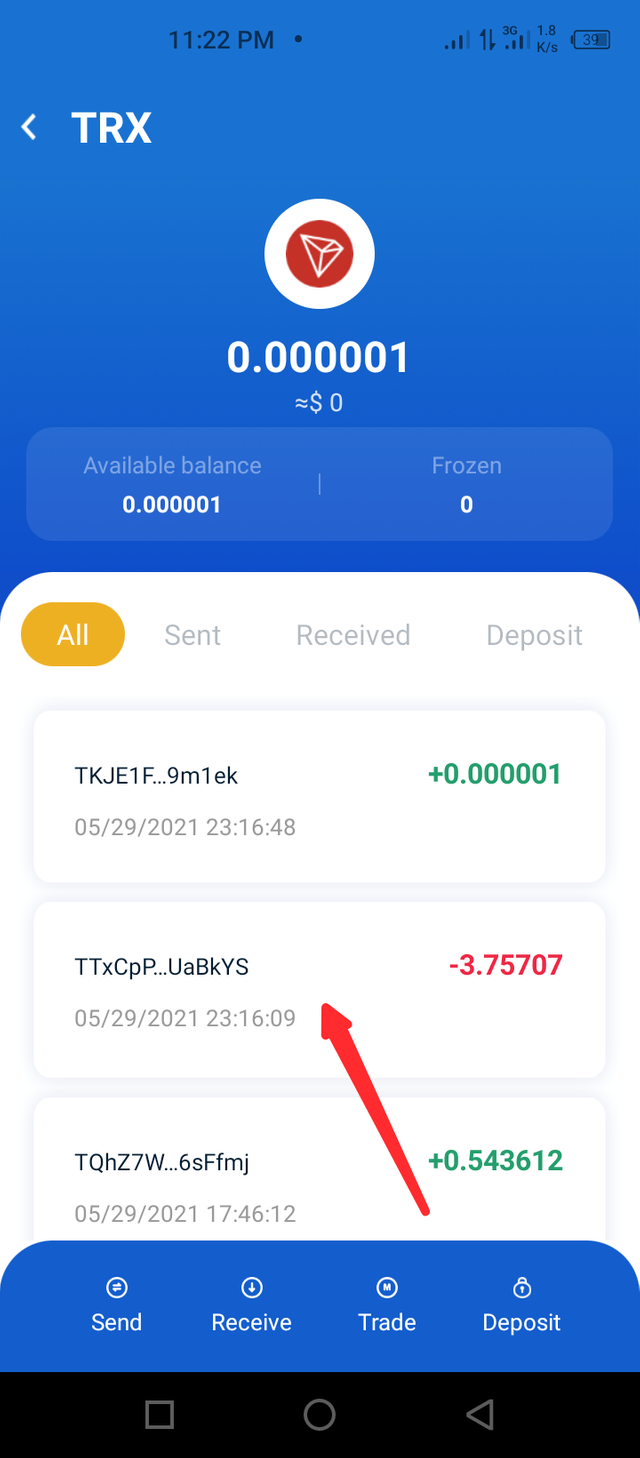
The details showed up and I tool note of the block number
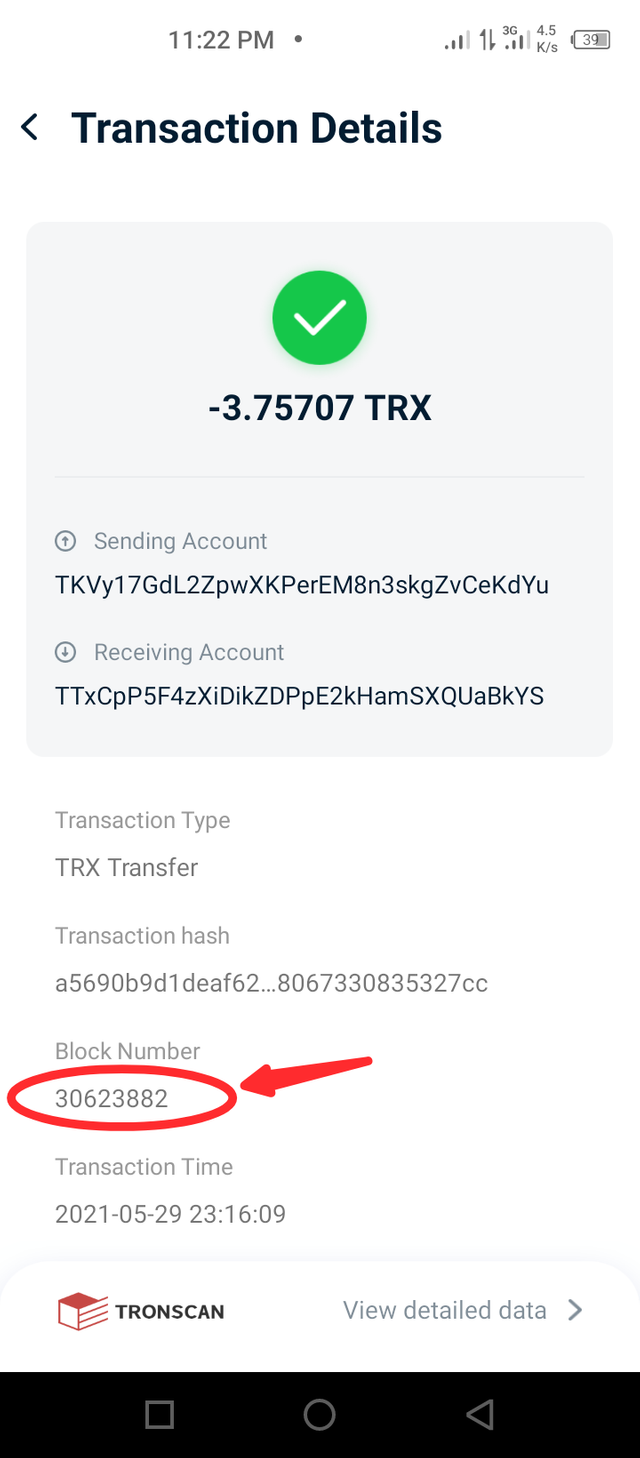
I went to tronscan.org to check for details of the block via the block number I retrieved from the details of the transaction - block 30623882
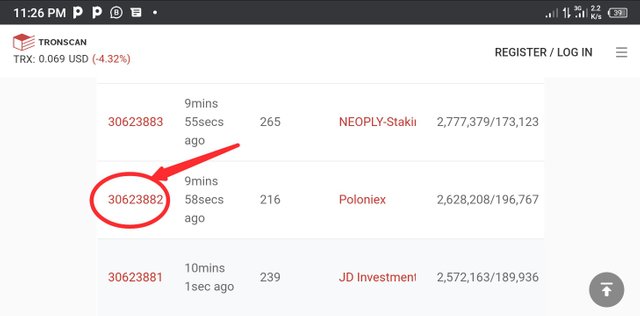
From the image above, we see from block number 30623881 and 30623882, that it took block 30623882 about 3 seconds to be completed. The block also contained 216 transactions, and was completed by Poloniex.
Judging from the block completion time, my transaction was completed in not more than 3 secs. Transaction speed at the time was
216/3 = 72 TPS
SCALABILITY ON BINANCE SMART CHAIN

Binance runs a dual chain ecosystem. There is a payment processing chain, similar to bitcoin's blockchain, and there is a smart contract supporting chain known as smart chain. This binance smart chain is similar to Ethereum and Tron in more ways than one. It support tokens creation as well as runs smart contracts. Other features are
PoSA
Binance Smart Chain employs Proof of Staked Authority as it consensus mechanism. In this kind of consensus, anyone who wants to participate in validation must stake BNB. Their rewards for validating blocks unlike Tron and Bitcoin is just transaction fees.
BLOCK TIME
Just like Tron, Binance Smart Chain has a block completion time of about 3 seconds. This is evident on bscscan.com, Binance Smart Chain's variation of tronscan.org
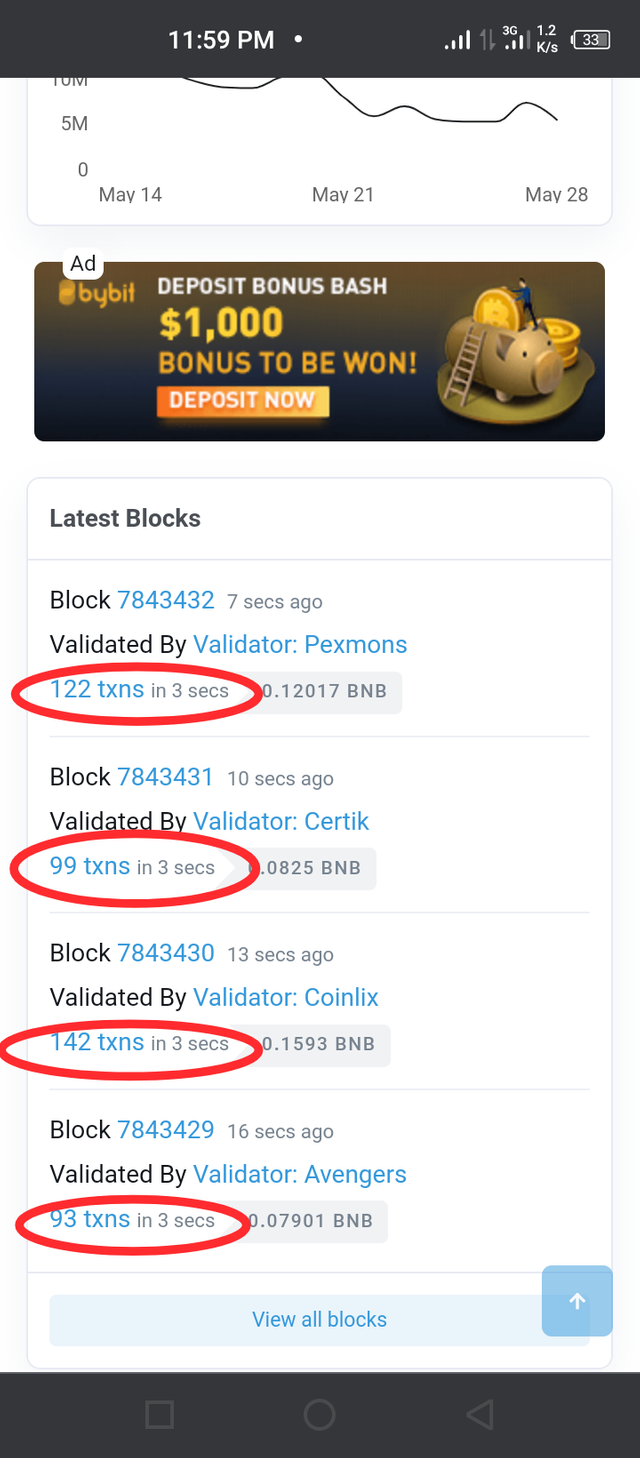
TRANSACTION SPEED
On bscscan.com, we can also find the transaction speed of Binance Smart Chain.
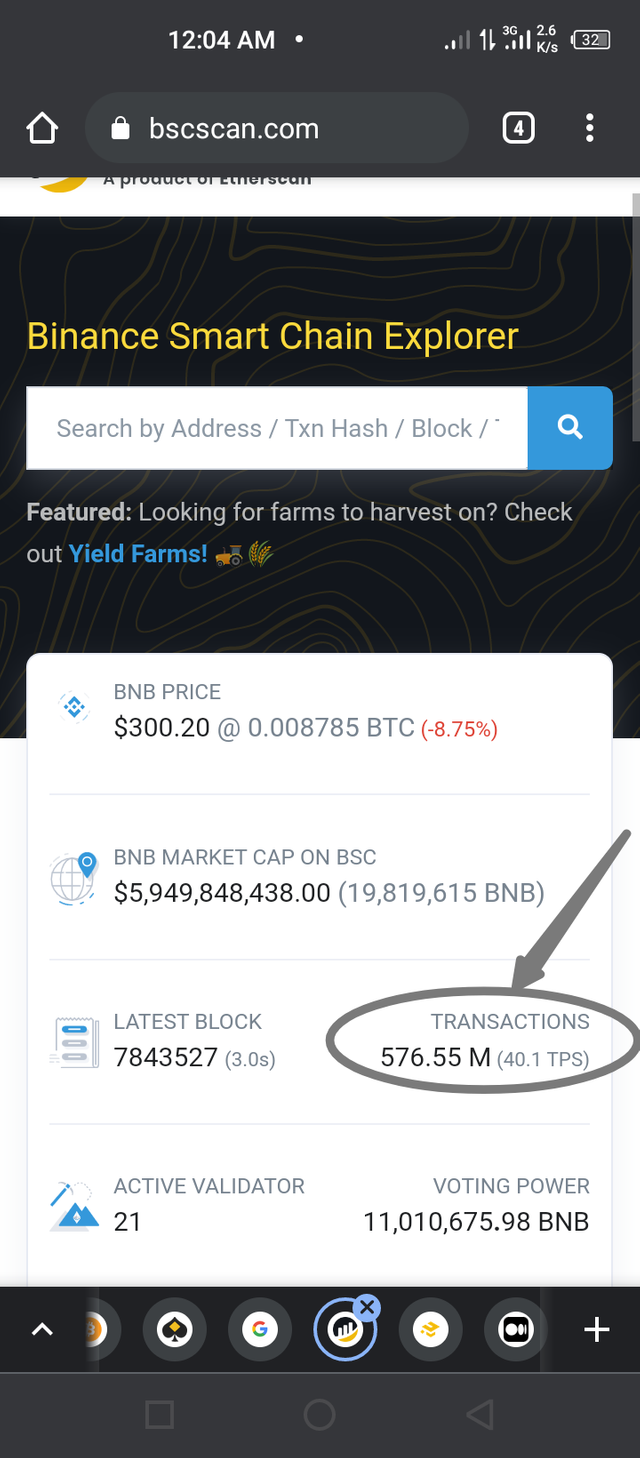
From the image above, transaction speed on Binance Smart Chain, according to bscscan.com is 40.1 TPS.
Here's a practical example with a transaction I carried out where I transferred BNB (smart chain) from my binance account to my trust wallet.
First, I copied my address from my trust wallet
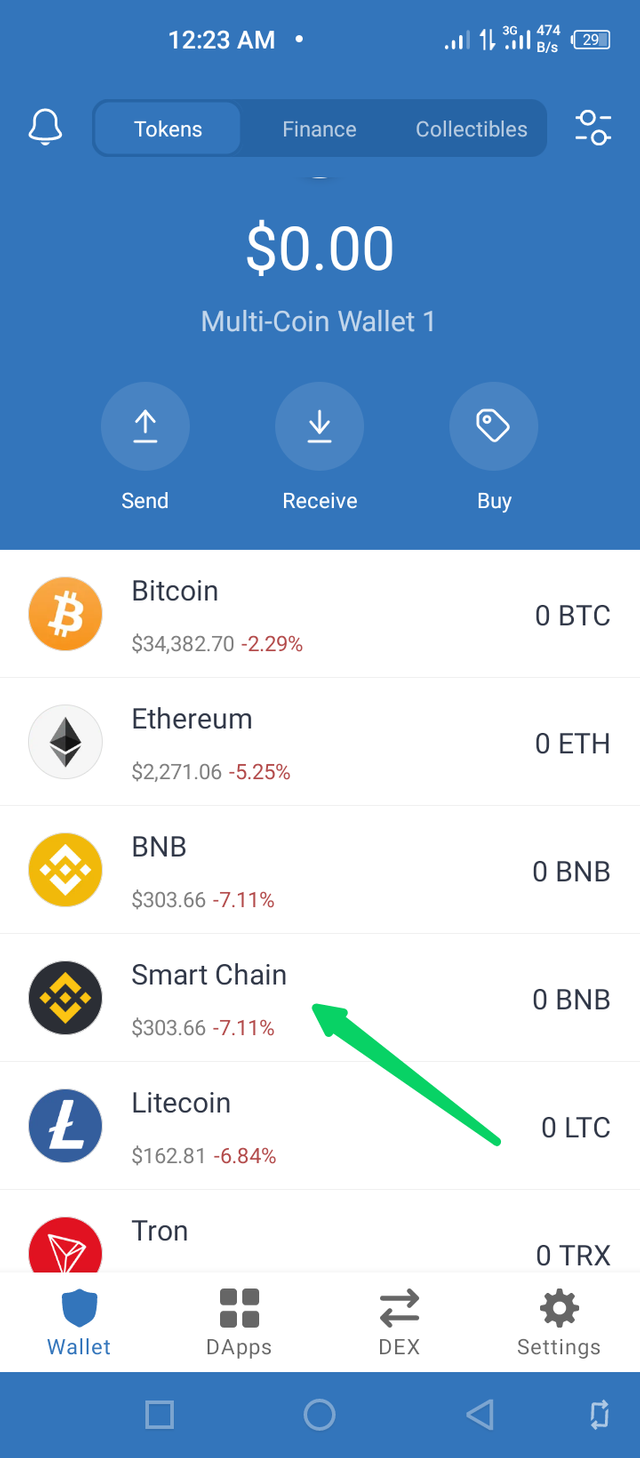
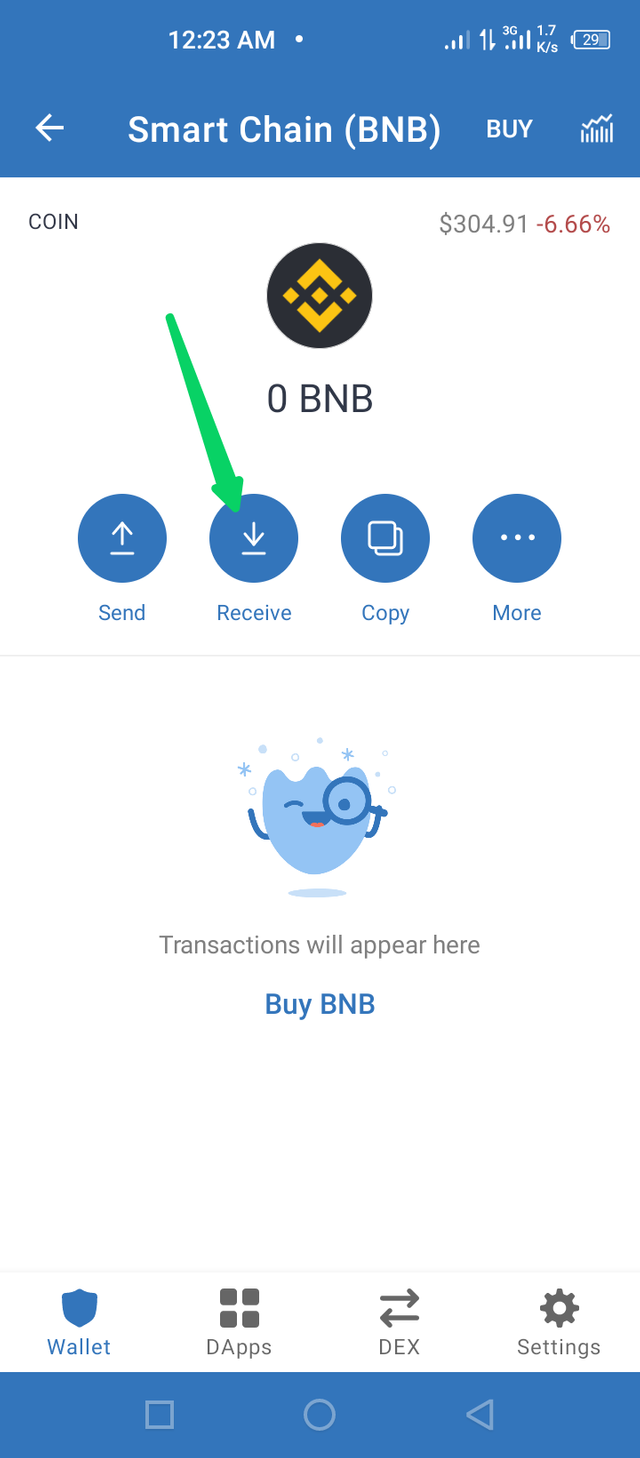
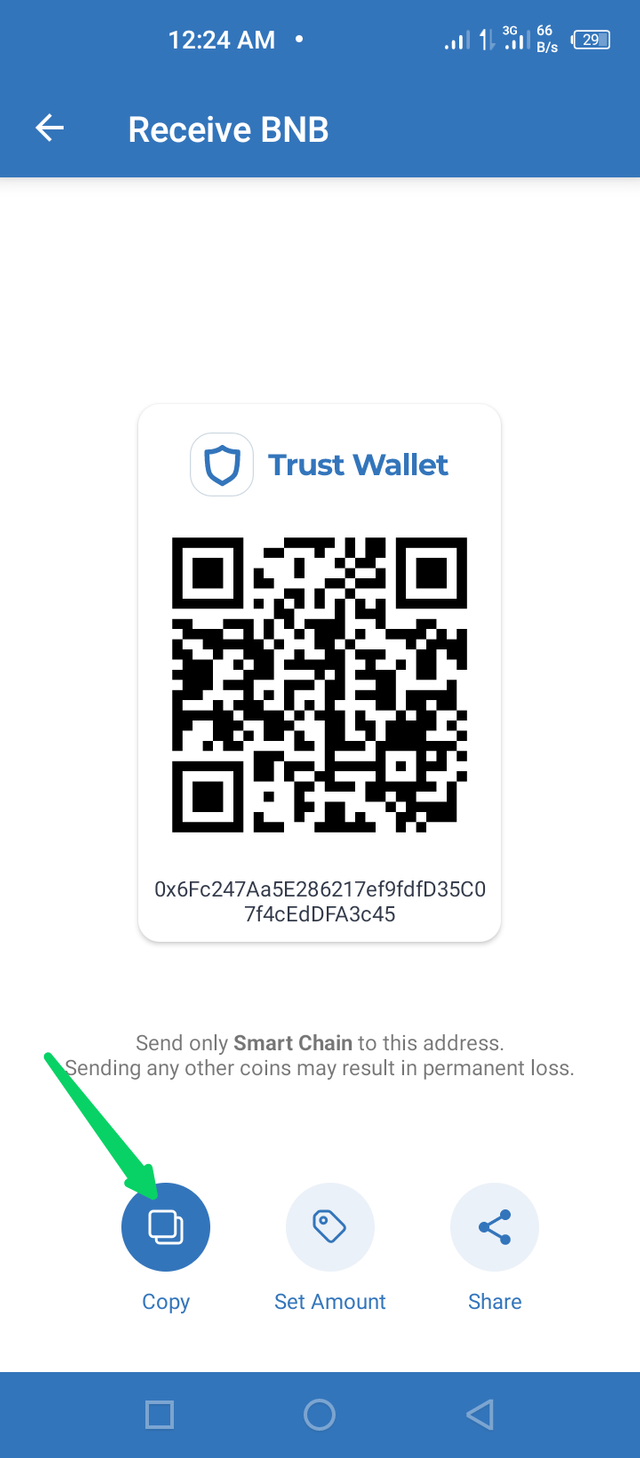
Then I went over to binance to initiate the transfer
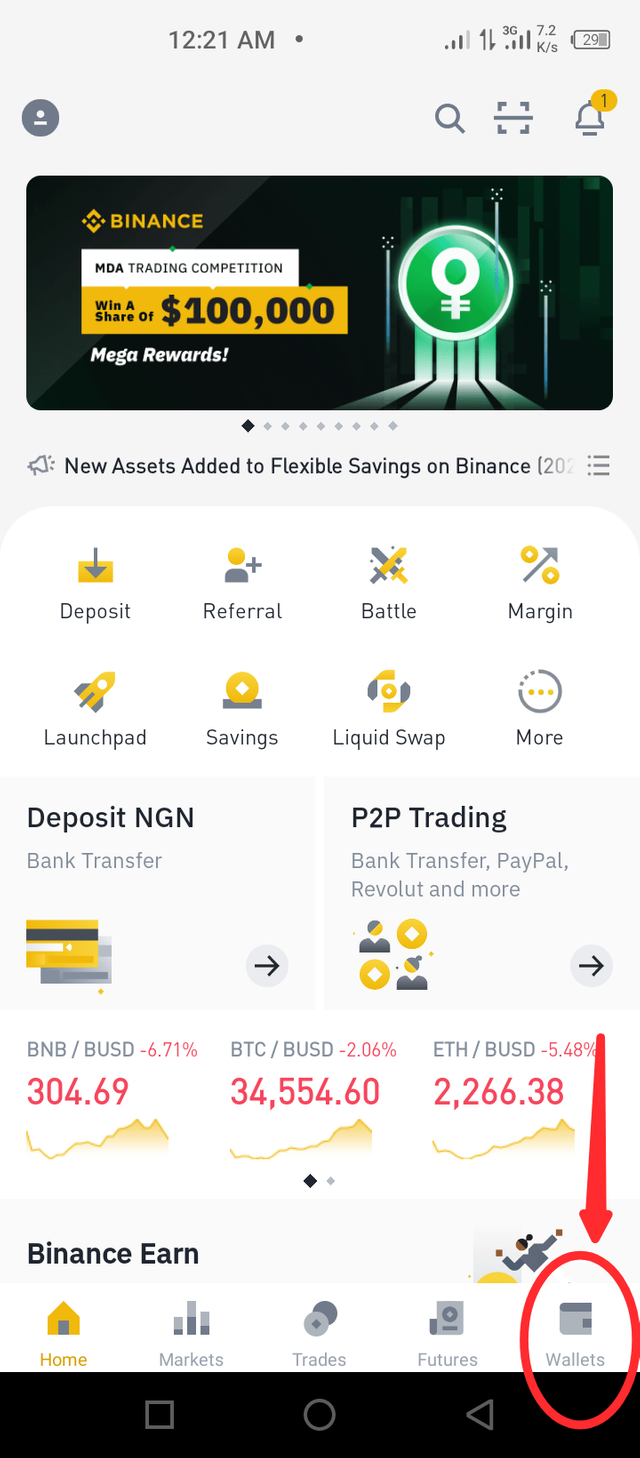
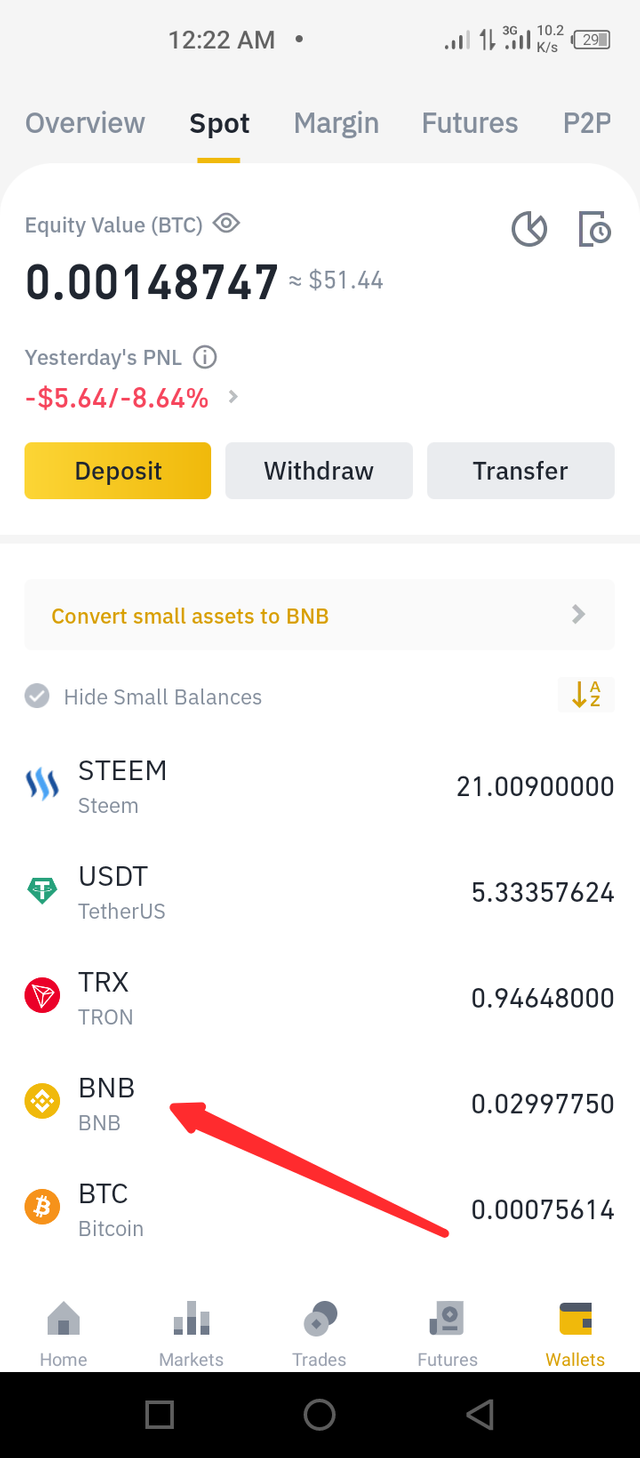
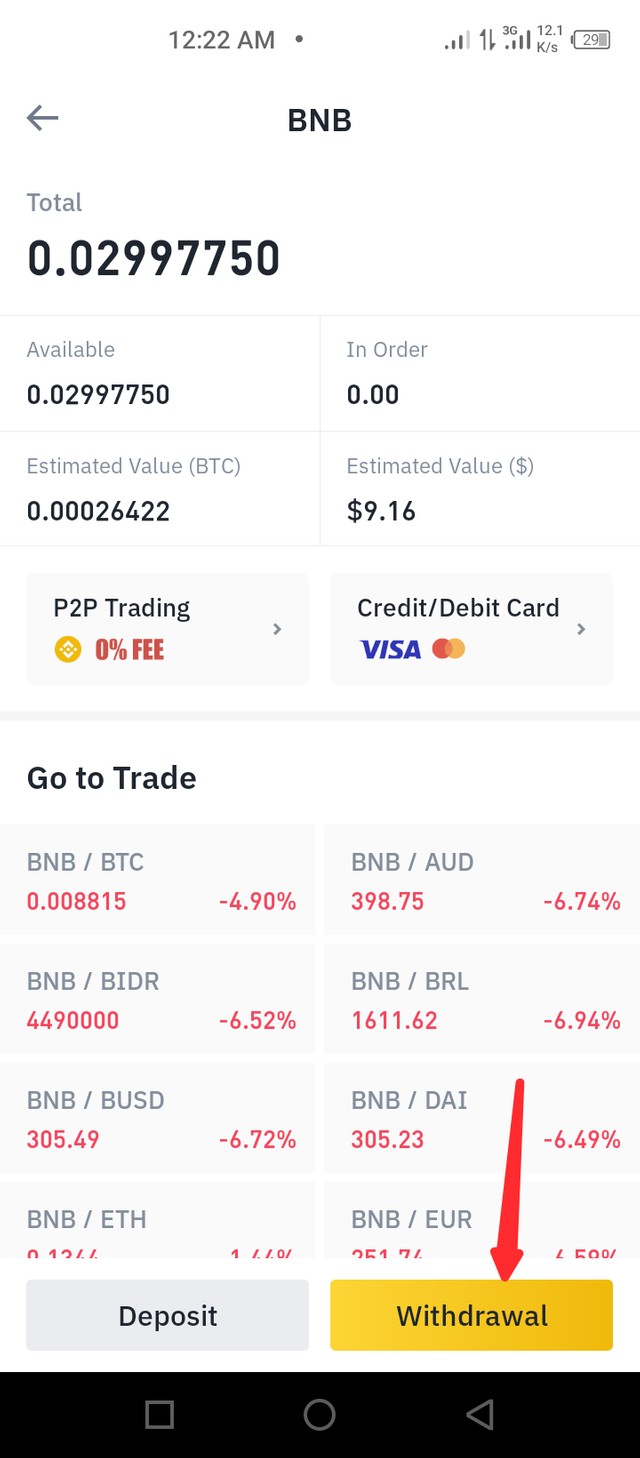
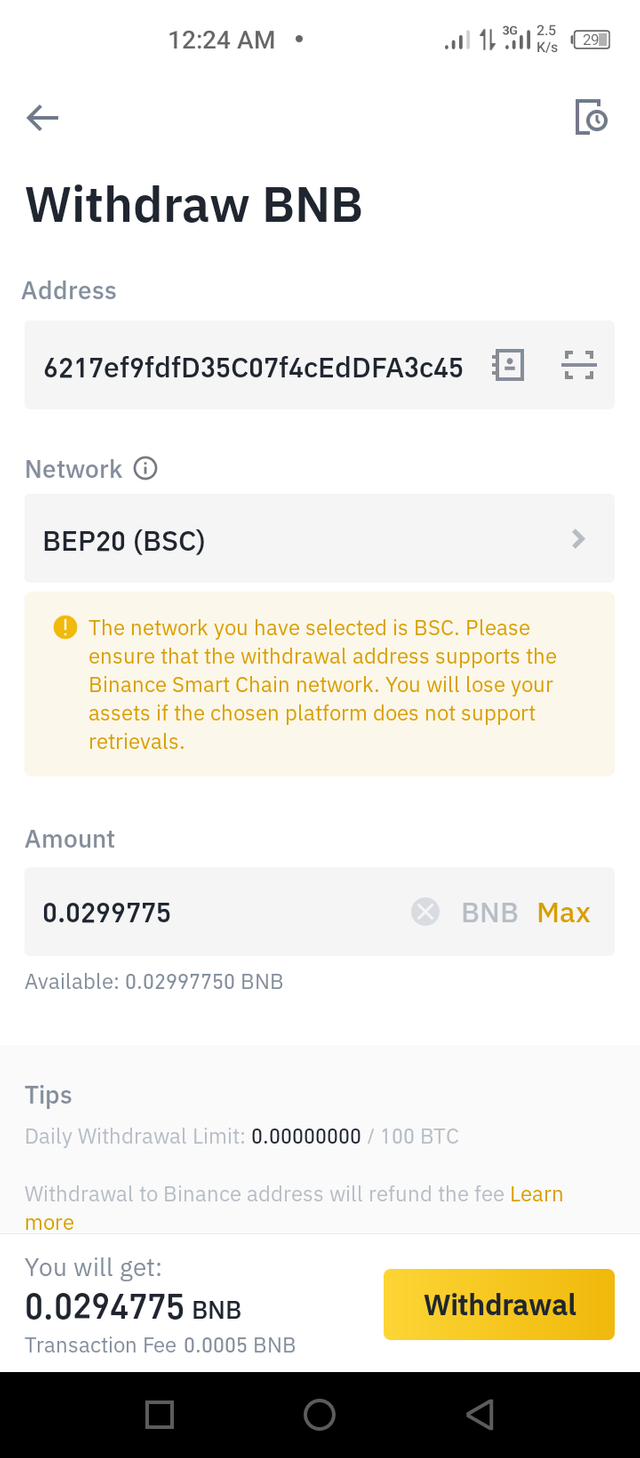
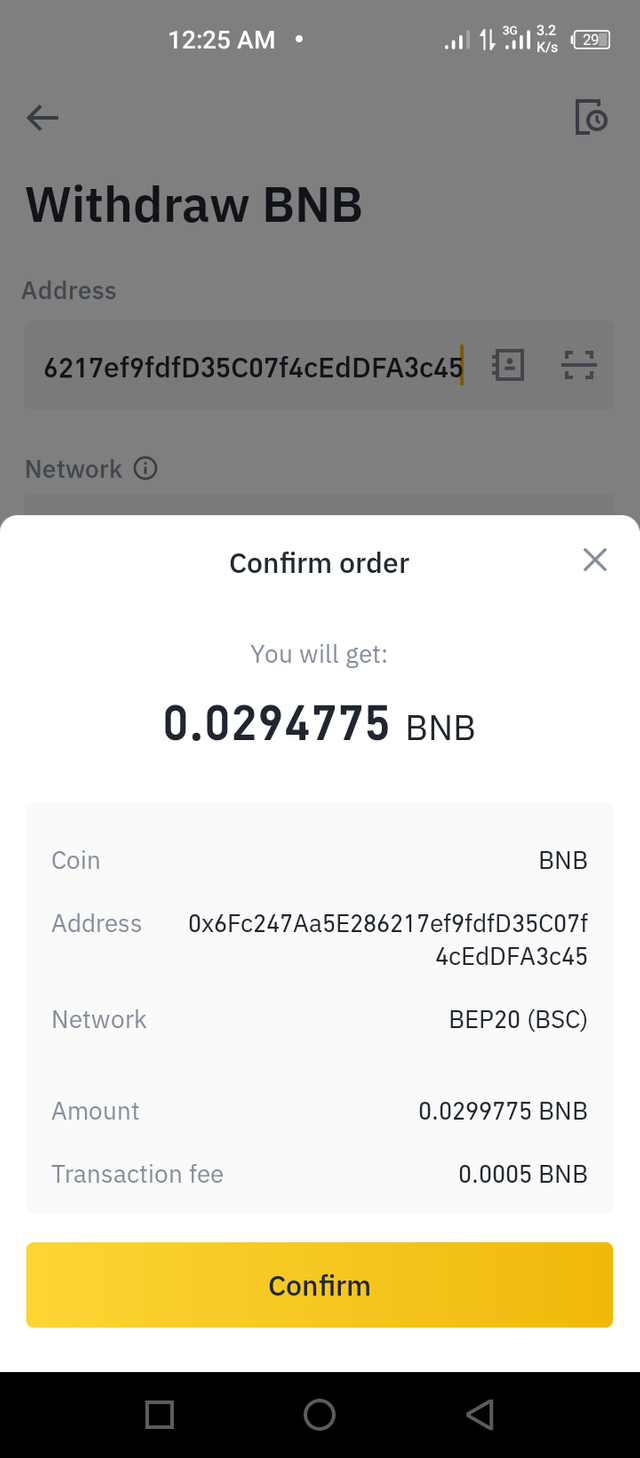
I had to send the necessary verification codes for my withdrawal to be completed
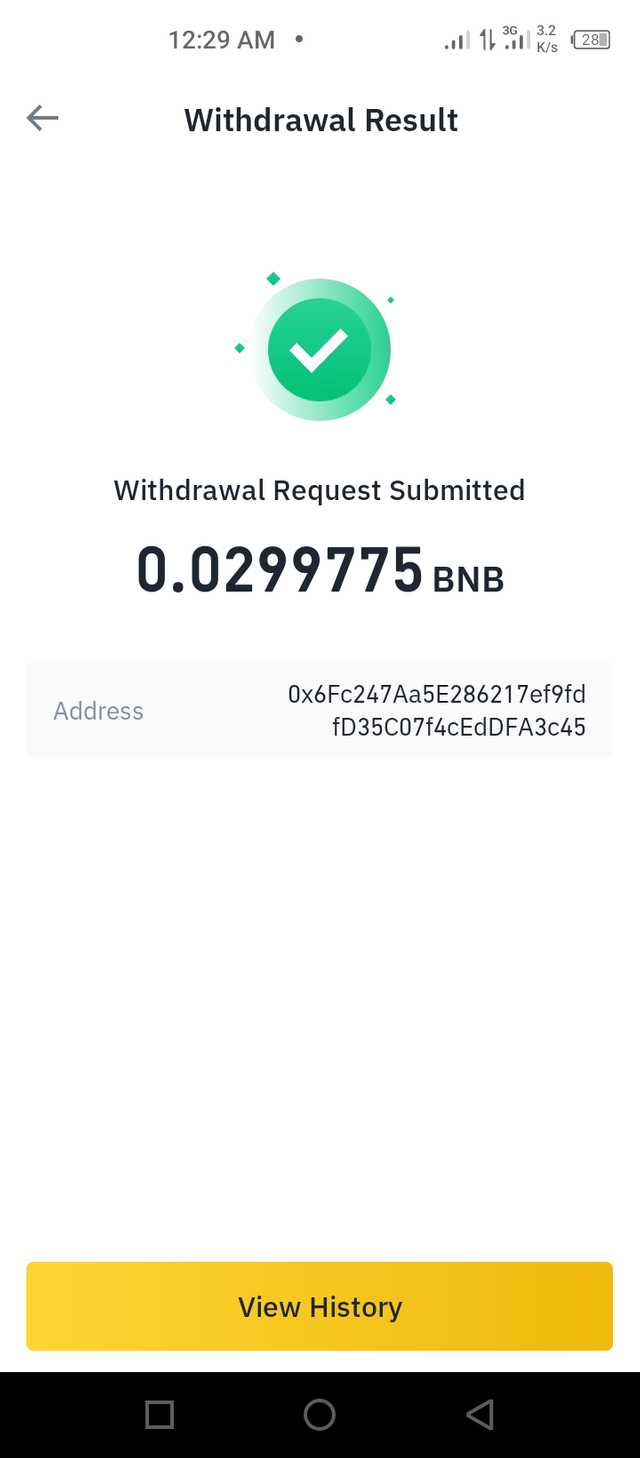
Now let's check the details of this transaction on bscscan.com via binance.
I click on view history

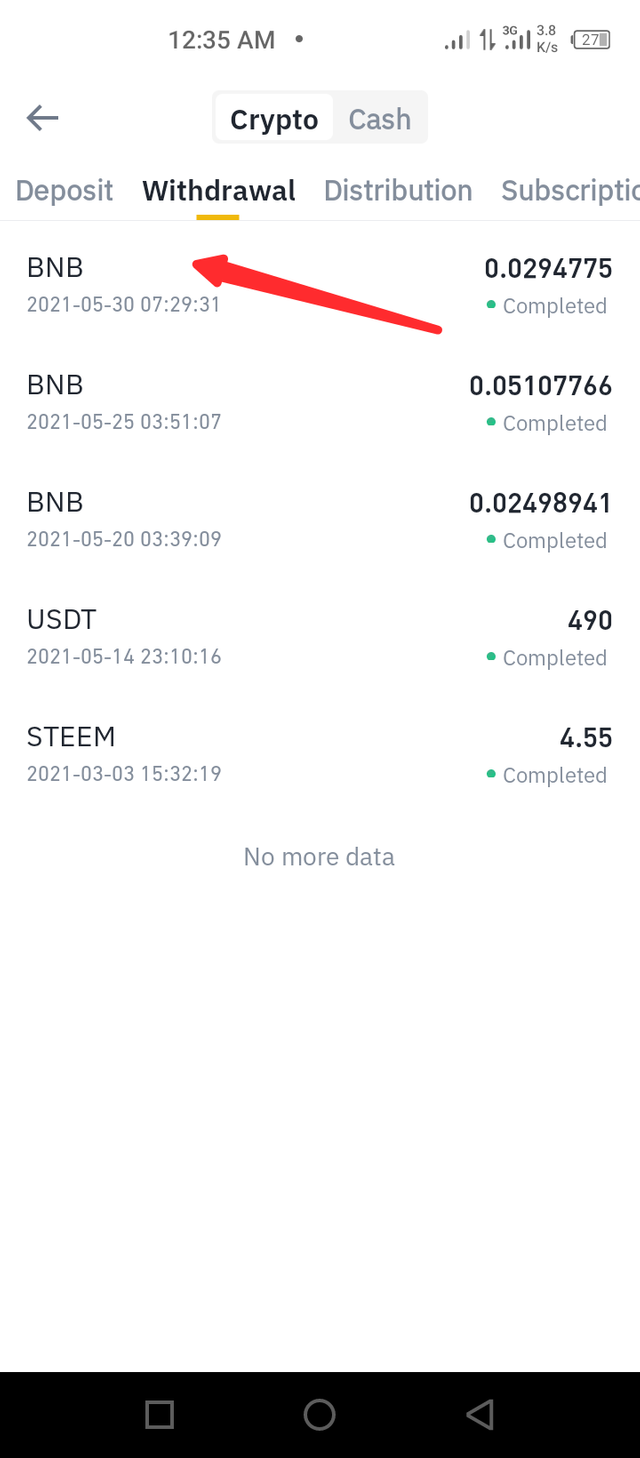
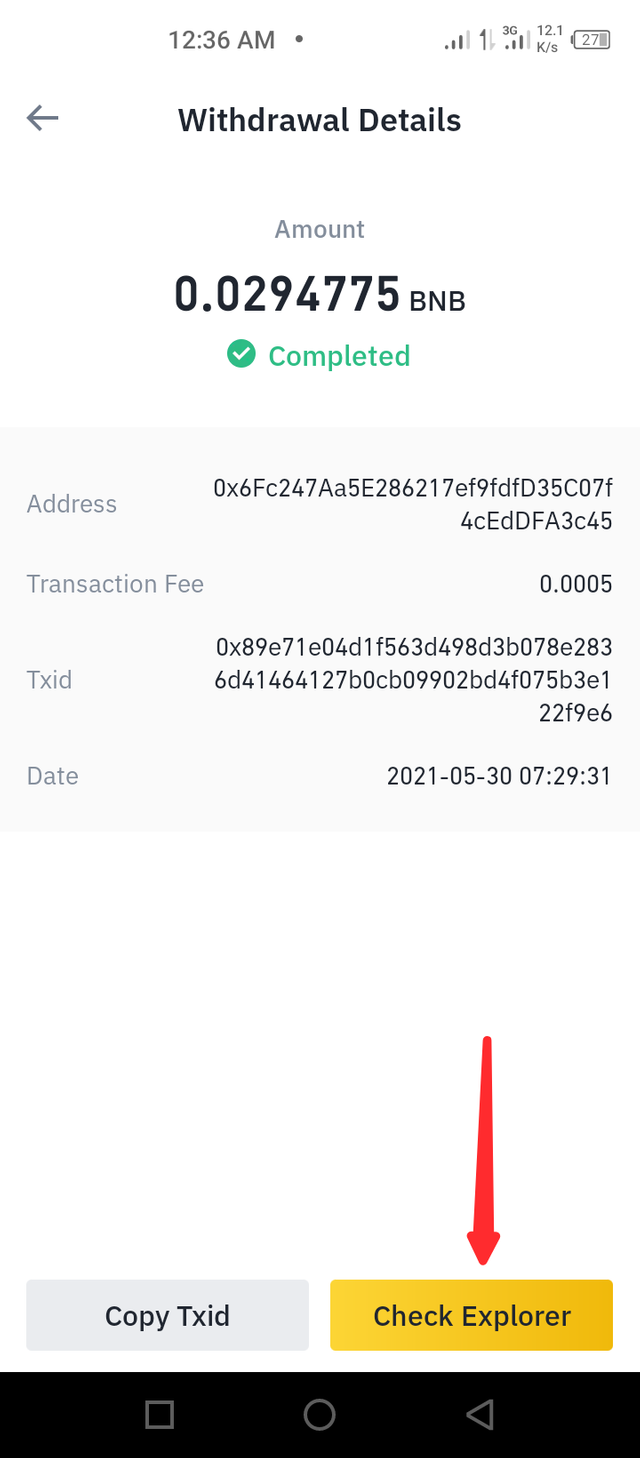
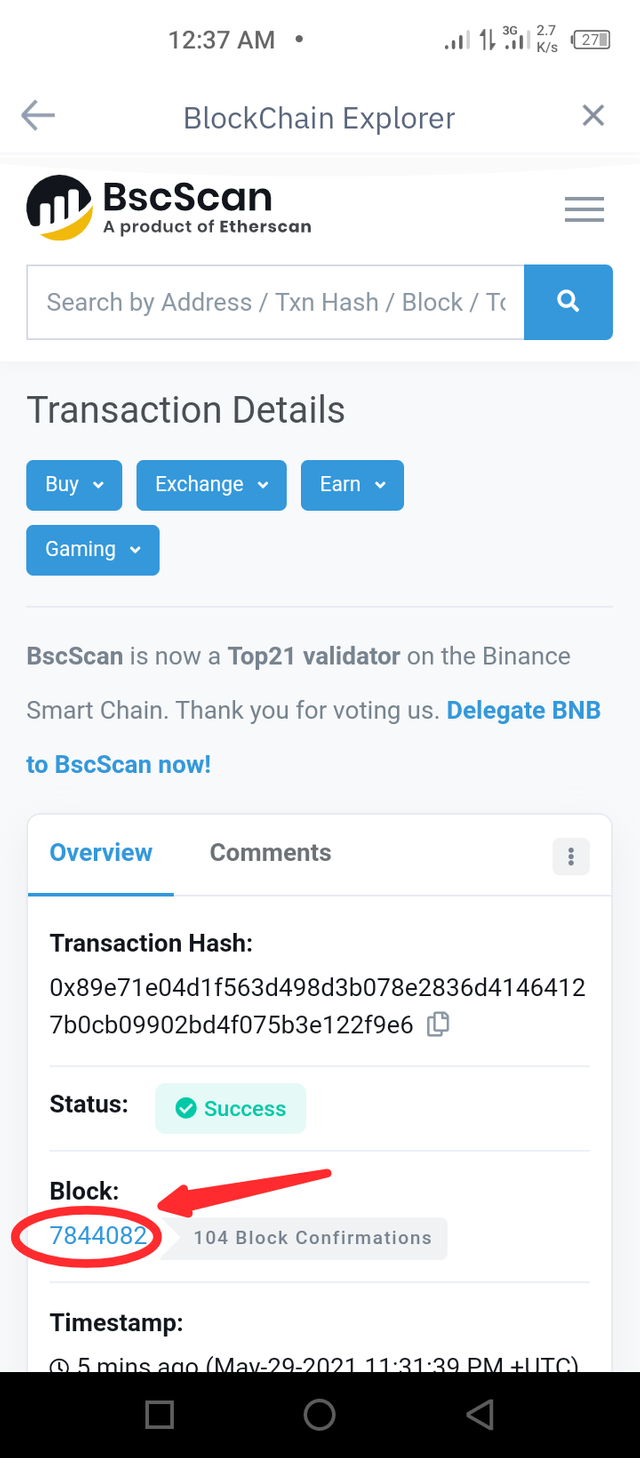
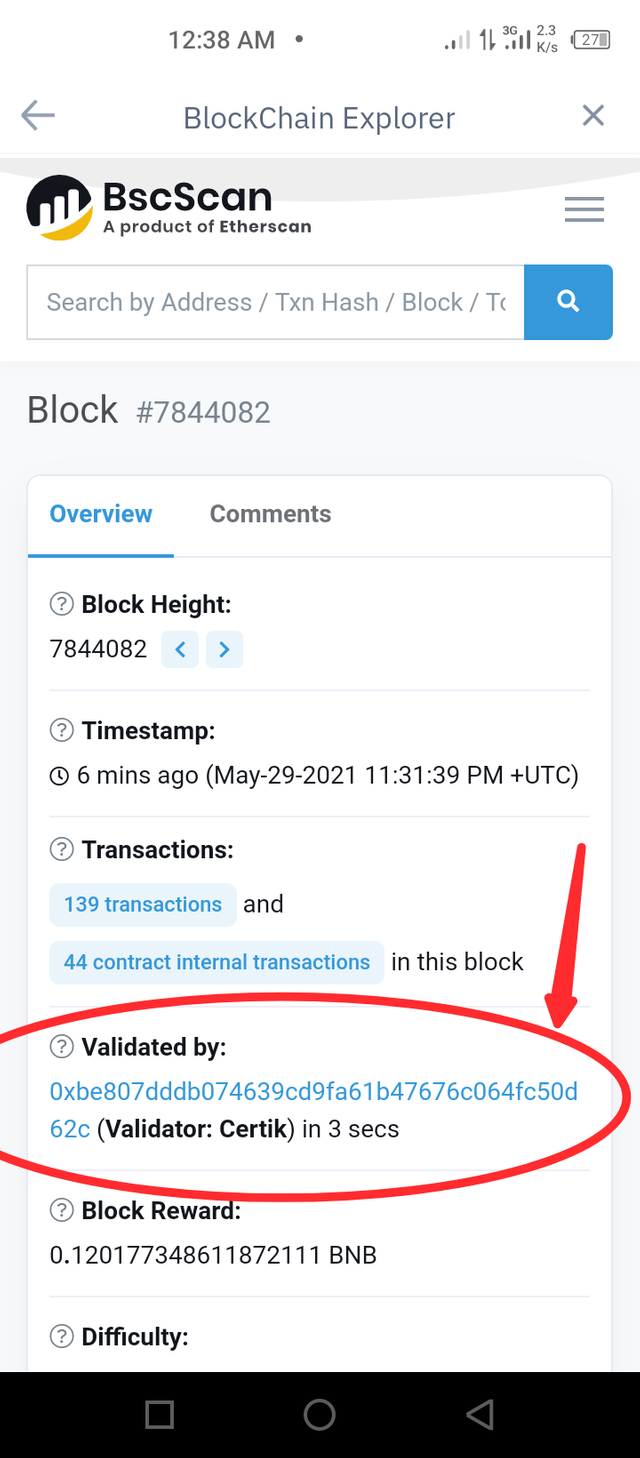
From the image above, we can see that the block containing my transaction was completely validated in 3 seconds by certik.
The block had a total of
139 + 44 = 183 transactions
Hence, Binance Smart Chain transaction speed for this block was
183/3 = 61 TPS
SCALABILITY COMPARISON

| Bitcoin | Tron | Binance Smart Chain |
|---|---|---|
| 3-5 TPS | 72 TPS | 61 TPS |
| block time of 600s | block time of ~3s | block time of ~3s |
| POW | DPOS | POSA |
| High level of decentralization | low level of decentralization | low level of decentralization |
IMPROVING SCALABILITY ON BITCOIN, TRON AND BINANCE SMART CHAIN

Tron and Binance Smart Chain boasts of relatively faster transactions than bitcoin. Nevertheless, at 72 and 61 respectively, both are still far from real speed like visa's 1700 TPS. Improving this speeds will basically involve both blockchains increasing their block size or reducing their block time.
They could also employ off chain solutions like sharding, but they'll have to get this complex technology right in order not to jeopardize the security of the blockchains
For bitcoin however, much is needed to be done. An increase in block size didn't actually get things clicking and altering the block time is greyed out, except of course, the consensus changes.
Layer 2 solutions like lightning network, and off chain solutions like sharding seem to be a good option but both still have an obstacle on the bitcoin blockchain to go over - high level decentralization.
To ensure scalability, bitcoin will have to tamper with some of its decentralization and adopt a lower level of decentralization. This is so because getting all the nodes to validate all transactions poses lots of hindrances to scalability. One of these is that, it presents a setback to off-chain solutions like the lightning network and sharding.
Layer 2 solutions like lightning network requires only some of the nodes on the main chain to validate its transactions and also requires a channel to interact with these nodes. Same goes for sharding which requires several nodes to validate transactions on several smaller chains.
Lightning network and sharding provides an avenue for additional transactions to be carried out on the blockchain, thereby increasing the number of transactions per second (TPS). The efficiency of each solution can further increase the TPS.
In both cases, transacting parties carry out transactions on the layer 2 network/smaller chain. These transactions are then validated by the nodes on the layer 2 network/smaller chain. Here, not all the nodes on the bitcoin network get to validate these transactions as not all the nodes are on the lightning network/shard chains
These transaction validated in second layer networks/shard chains, still have to be added to the main network. Mind you, they were not validated by all the nodes on the bitcoin network, a critical part of the bitcoin blockchain consensus.
For this to go through, it means some nodes will have to be selected to do the validation on behalf of other nodes. This is a bit of centralization but it will ensure the success of off chain solutions like sharding, and layer 2 networks like the lightning network and by extension, scalability of the bitcoin blockchain.
It goes without saying but I have to say that Tron and Binance Smart Chain run a low level decentralization validation process where an elected few validate transactions on both blockchain and broadcast the transactions to the the blockchain.
Hopefully, bitcoins developers can get more determined and make bold steps to scaling the blockchain.
CONCLUSION

I have shown how the scalability of bitcoin lags behind those of tron and binance smart chain. The issue of scalability still remains a hindrance to dominance, and except proper solutions are employed, blockchain might not go further.
Thanks for reading.
Cc:
@alphafx
So much effort put into this work. I respect that. I only with you put in as much energy in comparison as you did in the introduction.
Thanks for participating
Downvoting a post can decrease pending rewards and make it less visible. Common reasons:
Submit